60+ Ways to Share and Distribute Your Affiliate Links

To succeed in affiliate marketing, you need people to click your links. Without passing through a link with your affiliate tag, any action a user takes is valueless to you. With that tag, though, it’s a whole other story. What you need to do, then, is find places where you can share your affiliate links to get traffic.
Keep in mind that the best way to promote affiliate products is typically through your own website. All of these ideas are supplemental at best. Always check the terms of service for any site to make sure affiliate links aren’t against their rules before you post. The last thing you need is to be blocked from a site where you otherwise have good standing.
1. A Facebook Page
A Facebook business page may not seem the right step for an affiliate marketer in the early stages of business, but it’s perfect once you’ve built a website, a small community, a mailing list and a brand.
2. Your Facebook Profile
There’s no reason not to post your affiliate link on your Facebook profile, is there? If you stand by the offers you’re selling, get friends and family to buy them.
3. Facebook Groups
Facebook groups are probably the least effective of the places you can market on Facebook, and that’s just because there are so many of them, and a lot of them are dead because no one pays attention to them. Still, a few active groups exist and can be good fodder for affiliate links.
4. Google+ Posts
Google+ is a primarily tech-focused audience, but it has expanded a lot over the years, and you can find just about as much varied content on it as you can on Facebook. Affiliate links are right at home in organic posts on the site.
5. Google+ Groups
Much like Facebook groups, groups on Google+ give you access to a smaller, more exclusive group of people interested in a particular topic. Once you’ve got their attention, market away.
6. Twitter Hashtag Conversations
It’s easy to post on Twitter, but you don’t get a lot of exposure if you’re not using hashtags. Do your research, find some interesting hashtags, and take part in the conversations.
7. Pinterest Pins
Pinterest is a resource board for a primarily female audience interested in crafts, art and design. You can create some very interested followers just by promoting your offers in the right way on the site.
8. Instagram Photos
You need a mobile device and a bit of graphic design talent to become an Instagram success, but you don’t need to be a huge success; just someone with exposure in the right circles. Hashtags and quirky images are critical here.
9. YouTube Videos
Do a quick YouTube search for your offer and chances are you’ll find a bunch of videos of people trying to promote that offer. Many of them will be based on the same template and will be decidedly uninspired. Make a better video and promote it, and you’ll quickly gain prominence as the best of the bunch.
10. Vimeo Videos
Any video that you create and host on YouTube, you can host on Vimeo as well.
11. Dailymotion Videos
Like Vimeo, any video you post on YouTube can be posted here as well. There are other video hosts, too, even including Facebook, but those are yours to explore.
12. LinkedIn Posts
LinkedIn is great for professionals and employers, and it’s equally great for marketing professional tools, resume services, and other items that such professionals would be interested in buying.
13. LinkedIn Groups
LinkedIn has some very robust groups, and because you’re limited in the number you can join, it makes joining very exclusive. Finding some good groups can give you the ability to promote just about anything.
14. Relevant Forums
Industry-related forums are a great place to become a member of a community. Once there, you can work links to your blog posts and to your site in to your most educational posts. Put one in your profile and one in your signature, and don’t shoehorn them into every post. That way, you have more goodwill among users.
15. Review Sites
One of the best ways to make an affiliate site is to make a review site with a lot of products compared and contrasted, each with its own affiliate link. You can also find review sites others have made and leave your affiliate link in the comments on their posts. It won’t always work, but it will get you a little extra exposure.
16. Blog Posts
Build a blog on your site. You don’t need to post a lot, just once every week or so. This lets you provide value and have something to link to that’s not a squeeze page or an offer direct.
17. Blog Comments
By providing valuable and insightful comments on blog posts, you can work in a link to a post on your site. Avoid directly using affiliate links, as these look like spam and are often caught and blocked by blog spam filters.
18. Craigslist Ads
Craigslist has a policy that removes ads that include affiliate links. Instead of promoting your link directly, promote it through your website as a filter, so users don’t know right off that they’re clicking an affiliate link.
19. Reddit Subs
Reddit can be a good place to market, but you have to be careful to fit in. You can’t just throw your link wherever, because people will question it and they will downvote it into invisibility. Your only hope is to be a regular member of Reddit, while advertising your link when it comes up.
20. Imgur
This site is an image host with a Reddit-style upvote system to determine what is seen and what isn’t. Be careful with what you share and you can couple humor with an offer to get hundreds of thousands of views to one link.
21. Tumblr
As far as social networks go, Tumblr is one of the hardest to use just because the people there love to reblog content, but will often edit links when they do, without telling you they removed your affiliate tag. It’s also a site full of teenagers and young adults with widely disparate interests.
22. Facebook Ads
Facebook ads allow affiliate links, but they have to be decent-looking links, and you have to comply with all of the other rules about images and copy. It’s often easier just to link to your site, where the affiliate links are. Facebook’s huge audience is a boon, as is the great targeting.
23. Google Ads
Google has worse targeting but more exposure than Facebook. They also have no rules against affiliate links directly; rather, they say you’re subject to the rules of the affiliate themselves, who often bans using Google ads to promote. This is usually because the company themselves are using Google ads, and don’t want your ads to get in their way.
24. Bing Ads
Bing is much the same as Google in terms of ads, though they have a smaller audiences and generally worse conversion rates. Still, they’re worth using, if you’re using PPC at all.
25. Quora Answers
Ever since Yahoo Answers closed, Quora has been the go-to Q&A site on the net. The difference is, you can build up reputation as a source of knowledge about your niche, and people will be willing to click the links you provide as sources, which will lead to your affiliate site.
26. Free Ebooks
By offering free ebooks on your site, you provide value to users and make them feel like they’re getting something out of you. This makes them feel as though they owe you, and they may be more likely to convert based on that alone. By having good content in the books, you further reinforce this feeling, and the links become icing on the cake.
27. Ebooks on Amazon
Amazon is a great place to self-publish ebooks, and you can set a price tag of $0 to attract people into getting a “deal” on the information you provide. Of course, the information is generally going to lead to affiliate links and conversions for you later.
28. Ebooks on Smashwords
Smashwords is the Barnes and Noble ebook competitor to Amazon’s Kindle Direct. It has all of the same benefits and drawbacks as Amazon’s service, and you can use it in the same way.
This site is like a cross between a social network and a PowerPoint presentation aggregator. Post slideshows and provide valuable content and you can market just about anything. The trick to using Slideshare is that a huge amount of the content on it is low-effort, unformatted drivel. By making formatted, valuable content, you’re already in the top 10%.
30. Subbit.co (Dead)
This site is designed for people who want alternatives to a given product, such as the same item in different colors, or the same item but cheaper. You can find items you have affiliate links for and offer your link as an alternative. Note: As of April 2017, this site appears to be offline and is not loading.
31. Backpage
This site is kind of like a less moderated, more free-for-all Craigslist. Use it to market just about anything, but be aware that they can have some of the same penalties for affiliate links as Craigslist. Be careful with what you advertise, and use your site as a filter whenever possible.
32. A Mailing List
By creating a mailing list of your own, you can provide content and affiliate offers to interested readers who signed up for your messages through your landing page.
33. Purchased Mailing Lists
The same as sending out a message to your own mailing list, except the people didn’t sign up for it. Be very, very careful with promoting offers this way, because it’s very close to spam and can get you removed from affiliate programs.
34. USFreeAds
This site looks fresh out of the 1990s, and that’s because it is. It’s one of the largest competitors for Craigslist that you’ve never heard of. It’s also great for affiliate marketers, particularly those with sites to share.
35. Multiple Squeeze Pages
This is simple; just make more than one site with your offer. It may seem like you’re competing against yourself, but you can optimize each squeeze page to focus on a different aspect of your offer, with different SEO to hit different niches.
36. StumbleUpon
By adding your squeeze page to Stumble, you can get a surprising amount of traffic, usually even traffic that’s relatively targeted due to the site’s interest options for browsing. It won’t be high converting traffic, but what is these days?
37. A Fake Discount Page
This concept is simple. Make a page complaining about getting your excellent product for $100, and then claim you found another page where you can get the same excellent product for just $25. Adjust prices based on the actual cost of your offer. People think they’re getting a huge discount, when the expensive version doesn’t actually exist.
38. YouTube Comments
A lot of people read and post YouTube comments, and while they often go off on weird tangents, you can often market something related to the main video in the comments. One interesting technique is to find old videos in your affiliate niche and comment on them with your offer as an alternative to the existing offer.
39. Widespread Article Submissions
By creating unique content with affiliate links
or links to your site, where affiliate links live
you can get a wider web reputation than many other affiliate marketers. Just be sure not to spam, don’t duplicate content, and try to stay relevant to your niche.
40. Traffic Exchanges
Traffic exchanges allow you to put a squeeze page in rotation and earn views to it by viewing other websites. Some of them allow autosurf robots to help you rack up credits for views as well. Find a good traffic exchange and make a highly optimized squeeze page to send users to.
41. Ezine Ads
There are thousands of small ezines published with sporadic schedules all over the web. There’s probably a couple in your industry, whatever that industry may be. Figure out if there are, identify them, and see if you can get an ad in their zine.
42. Sponsored Mailing List Posts
Some companies will allow you to pay them to get a mention, shoutout or tiny ad in their weekly or monthly mailing lists. These aren’t as common as they used to be, and you may pay a premium, but you’ll be getting a space on a focused and interested mailing list when you do so.
43. BuySellAds
This site is a hub and marketplace for PPC ads. You can submit ads on various websites and try to get enough conversions from them to cover the costs and make a profit. It’s the largest place to use PPC outside of Google and Facebook.
44. Hubpages
Hubpages is a centralized blogging platform where you can create hubs on just about anything. Write valuable content hubs and link to your affiliate offers through them. Squidoo was recently purchased and merged with Hubpages, so if you used it in the past, you already have an in here.
45. NickMom
A social network and content aggregator for moms, sponsored and operated by Nickelodeon. Moms can be convinced to buy just about anything, so it’s a great place to market all kinds of products, particularly with a little mom humor.
46. Ozmosis
This is a resource, social network, and service provider for healthcare in general. You can market a lot of healthcare-related items here, but be very carefully not to try to sell snake oil; these are highly educated people with a vested interest in real cures.
47. Crafter’s Community
Appropriately named, if uninspired, this community meshes very well with Pinterest and Instagram for marketing anything related to crafting, recycling, DIY and home improvement.
48. BootsNAll
This social network focuses on travel, primarily travel by foot from place to place. It’s great for marketing travel offers, hiking gear, survival equipment, and anything someone might need for traveling on foot through Europe or Asia.
49. AllRecipes
This site was made for aggregating recipes and commenting on them as a community cooking board. If you have specific ingredients or tools to market, you can leave them in recipe comments or make them integral to recipes you create.
5o. BikerOrNot
No, this isn’t a 21st century Hot Or Not. It’s a social network for bikers and those with a keen interest and appreciation for motorcycles. It’s great for marketing tools, gear, and even the bikes themselves on occasion.
51. Nextdoor
This is a social network entirely focused on hyper-local communication. Get to know your neighbors and their interests. You can market affiliate offers here, but make sure you’re capable of a little in-person salesmanship if you want to truly succeed.
52. Gentlemint
This site is modeled after Pinterest, only it’s designed for men. Think of it like a pinboard with a focus on guns, cars, jets, action movies and other such manly interests. This is opposed to Pinterest’s focus on more “female” interests, like decorating, cooking and fashion.
53. Flixter
This site is focused around movies and discussion thereof, and it’s ideal for movie buffs who want to communicate and associate with one another. Film-related offers work great here.
54. Ravelry
A colorful and cute social network focused on people with a keen interest in knitting, crochet, and other forms of yarnwork. Anything relating to yarn, sewing, and other fabric crafts can find a home here. Think of it like a more specialized Pinterest, in many ways.
55. UFOSocial
(Note: as of July 10th, this site stopped loading) This social network is populated entirely by UFO and paranormal sighting buffs. People who are interested in the paranormal and who want to compare their thoughts and findings with others with similar interests. Perfect for marketing paranormal-related content and tools.
56. Dpadd
A social network and journal hybrid for gamers who want to keep track of what they’re playing and what they think about it, with a community of like-minded users. You can promote a lot of gaming content here, from games to peripherals. It’s going to have a low conversion rate, though, because gamers tend to be picky with their links.
57. Dribble
This site is sort of like an Instagram for designers, where they can showcase their designs for anything from websites and apps to postcards and logos. Anything relating to design can be promoted here.
58. Goodreads
This is a social network for readers and writers to connect over the shared love of books and reading. It can be a great place for Amazon affiliate links, ebook marketing, and marketing tertiary products related to both reading and writing.
59. Athlinks
This is a large search engine, event promoter and social network for endurance athletes. If you have a fitness offer or an offer relating to endurance exercise, racing or equipment, this can be a brilliant place to market.
60. Untappd
This social network and mobile app hybrid is centered around beer culture, with a lot of reviews and promotions for microbreweries and DIY beer brewing in the home. If you have a beer-related offer, you may be able to promote it here.
61. Dogster
This is a social network for dog lovers and all things dog-related. This means it’s an ideal place to advertise any dog-related products, from dog treats and dog beds to dog clothes and grooming supplies. A similar site with a similar niche is Catster, with one obvious difference.
 ContentPowered.com
ContentPowered.com
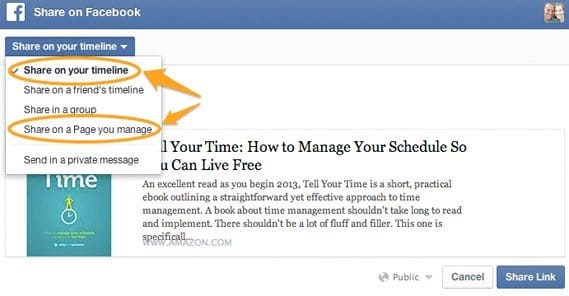
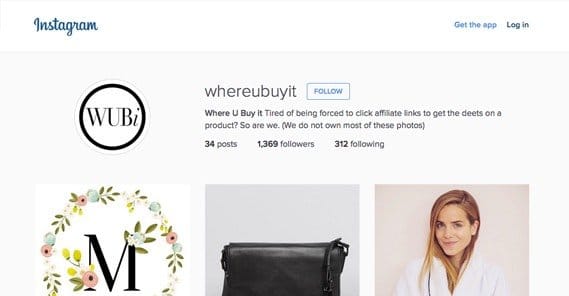


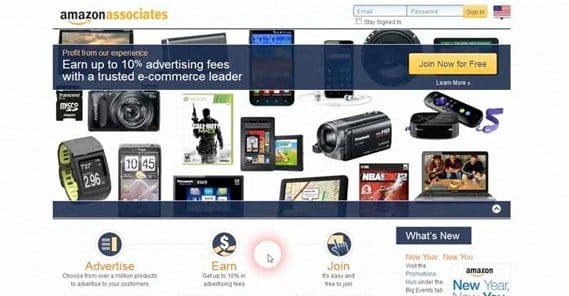

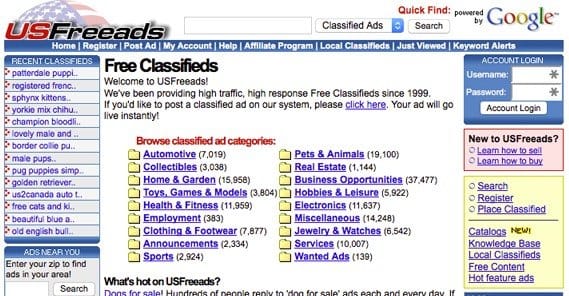

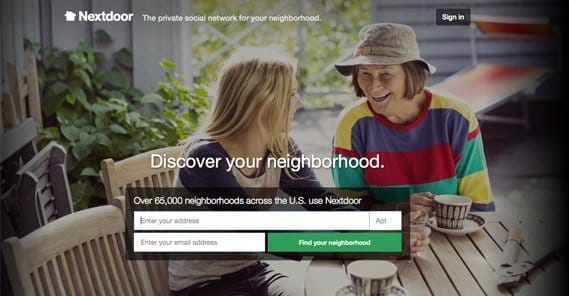



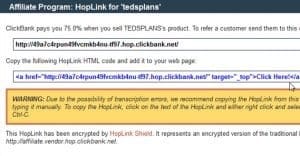
Thanks for this great resource!
Wow, this is quite a list. Very helpful. Thank you for putting it together.
This is an amazing article. I want to implement my marketing right away using these tips.
That’s an exhaustive list. Agree that you have to be careful with this tactic. Don’t wanna get banned … There’s another lesser known way of sharing affiliate links, and that’s offline. You have to shorten the link somehow, or rename it completely of course. But it definitely works because offline traffic tends to be good quality. Most suited to local, or at least country specific programs for obvious reasons.
If you do this with Amazon, though, that is against their ToS and they will take you off their program.
Awesome! Your information and details is one of the BEST I’ve found online as a resource. A wealth of GOOD sources to look into. Thanks for taking the time to put this all in one location for all of us out looking for the golden ticket to spur our business-Traffic. :O)
Great list. Thank you.